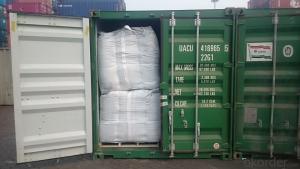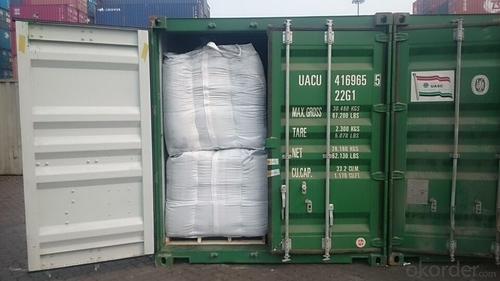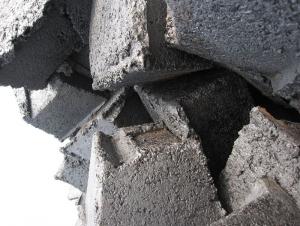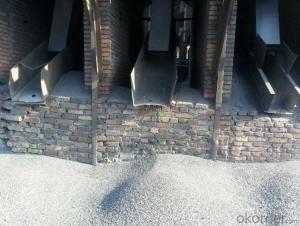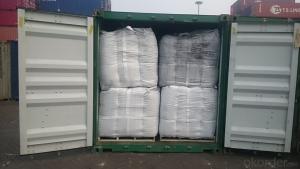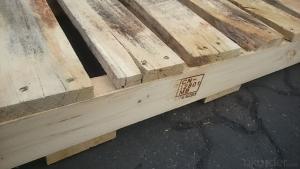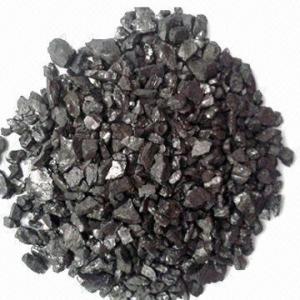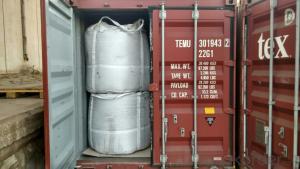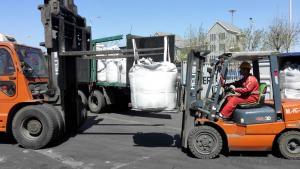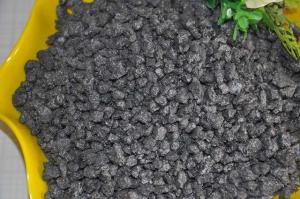Used in EAF as Carbon Additive for Steel Mills
- Loading Port:
- Tianjin
- Payment Terms:
- TT OR LC
- Min Order Qty:
- 21 m.t.
- Supply Capability:
- 6000 m.t./month
OKorder Service Pledge
OKorder Financial Service
You Might Also Like
Introduction:
Calcined anthracite can be called carbon additive, carbon raiser, recarburizer, injection coke, charging coke, gas calcined anthracite.
Carbon Additive/Calcined Anthracite Coal may substitute massively refinery coke or graphite. Meanwhile its cost is much less than the refinery coke and graphite. Carbon Additive is mainly used in electric steel ovens, water filtering, rust removal in shipbuilding and production of carbon material.
It has good characteristics with low ash, low resistivity, low sulphur, high carbon and high density. It is the best material for high quality carbon products. It is used as carbon additive in steel industry or fuel.
Features:
Best quality Taixi anthracite as raw materials through high temperature calcined at 800-1200 ℃ by the DC electric calciner with results in eliminating the moisture and volatile matter from Anthracite efficiently, improving the density and the electric conductivity and strengthening the mechanical strength and anti-oxidation, It has good characteristics with low ash, low resistivity, low carbon and high density. It is the best material for high quality carbon products, it is used as carbon additive in steel industry or fuel.
Specifications:
F.C.% | 95MIN | 94MIN | 93MIN | 92MIN | 90MIN | 85MIN | 84MIN |
ASH % | 4MAX | 5MAX | 6 MAX | 6.5MAX | 8.5MAX | 12MAX | 13MAX |
V.M.% | 1 MAX | 1MAX | 1.0MAX | 1.5MAX | 1.5MAX | 3 MAX | 3 MAX |
SULFUR % | 0.3MAX | 0.3MAX | 0.3MAX | 0.35MAX | 0.35MAX | 0.5MAX | 0.5MAX |
MOISTURE % | 0.5MAX | 0.5MAX | 0.5MAX | 0.5MAX | 0.5MAX | 1MAX | 1MAX |
Pictures
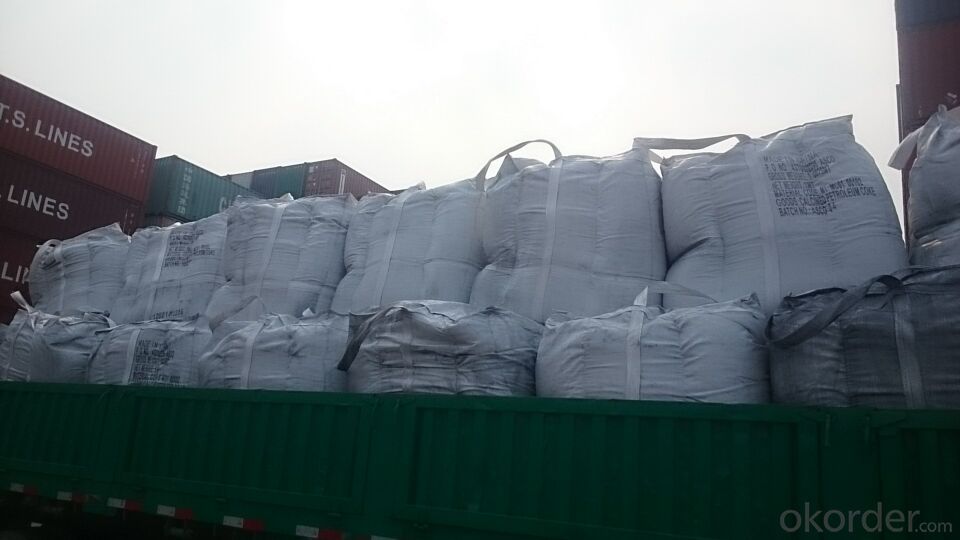
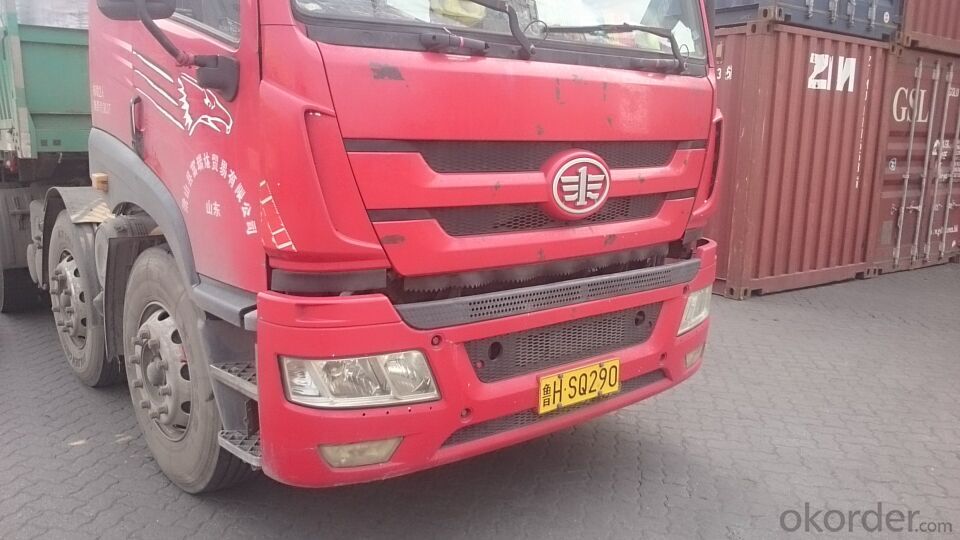
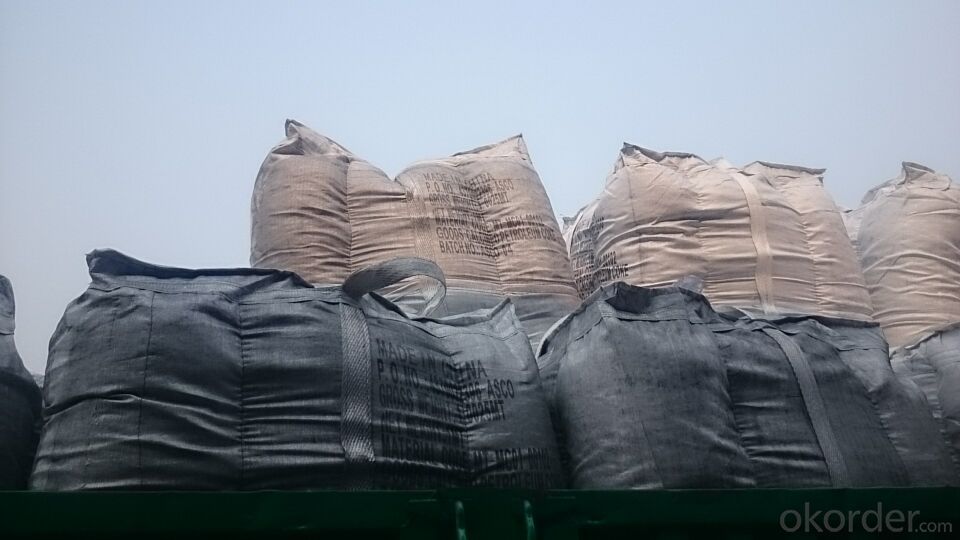
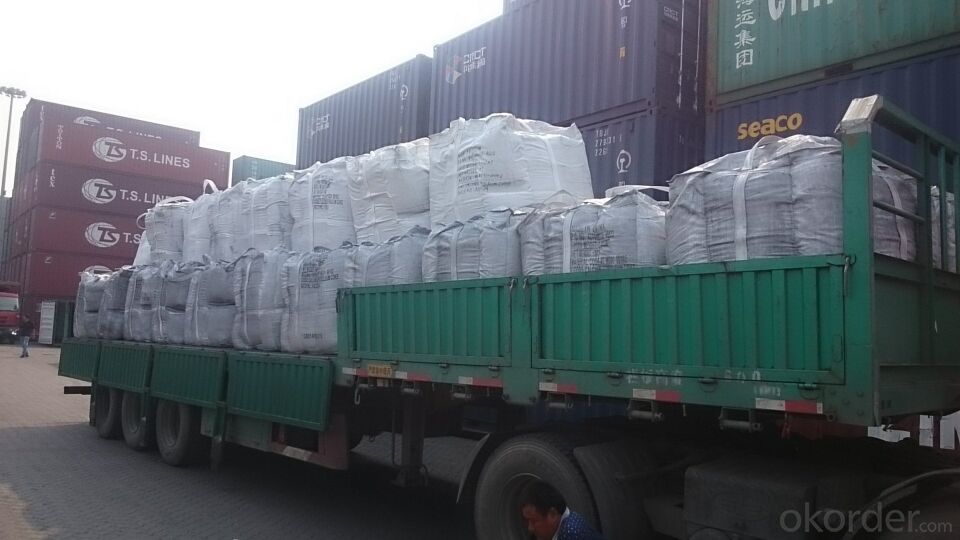
FAQ:
Packing:
(1). Waterproof jumbo bags: 800kgs~1100kgs/ bag according to different grain sizes;
(2). Waterproof PP woven bags / Paper bags: 5kg / 7.5kg / 12.5kg / 20kg / 25kg / 30kg / 50kg small bags;
(3). Small bags into jumbo bags: waterproof PP woven bags / paper bags in 800kg ~1100kg jumbo bags.
Payment terms
20% down payment and 80% against copy of B/L.
Workable LC at sight,
- Q: Power plant water treatment plant, there is a carbon removal device, the expert pointing out what the principle is it?
- The water enters from the upper part of the carbon removing device and is poured down by the water distribution equipment and enters the water tank from the lower part through the filling layer. In addition to carbon, due to the blocking effect of filler, flow down from the top of the water is dispersed into many small stocks or drop, from the bottom of the drum into the air and water contact area is very large, and the partial pressure of carbon dioxide in the air is very low, so it will come out from the water desorption carbon dioxide quickly away. Water can be removed by blowing carbon, which can reduce the carbon dioxide content to below 5mg/L. In fact, the simple point is that the amount of dissolved gas in water is proportional to the pressure of the air he touches. This principle is similar to the principle of the atmospheric Deaerator in the power plant. I hope I can help you
- Q: What are the impacts of carbon emissions on the stability of rainforests?
- Carbon emissions have significant impacts on the stability of rainforests. Increased levels of carbon dioxide in the atmosphere due to emissions contribute to global warming, leading to changes in rainfall patterns and increased temperatures. These changes can negatively affect the delicate balance of rainforest ecosystems, causing droughts, wildfires, and loss of biodiversity. Additionally, carbon emissions contribute to the acidification of oceans, which can harm marine life that rainforests depend on, such as coral reefs. Overall, carbon emissions pose a serious threat to the stability and long-term survival of rainforests.
- Q: How does carbon affect the formation of acid rain?
- The formation of acid rain is not directly influenced by carbon. Instead, it is mainly caused by the release of sulfur dioxide (SO2) and nitrogen oxides (NOx) when fossil fuels like coal and oil are burned. However, the emission of carbon dioxide (CO2) from the burning of these fuels contributes to climate change and indirectly impacts the formation of acid rain. The rise in atmospheric carbon dioxide levels leads to the trapping of heat, resulting in global warming. Consequently, this alters weather patterns and increases the frequency and intensity of extreme weather events. These alterations can affect the formation of acid rain by changing how sulfur dioxide and nitrogen oxides disperse. Furthermore, when fossil fuels are burned and release carbon dioxide, they also release sulfur dioxide and nitrogen oxides as byproducts. When these gases react with water, oxygen, and other chemicals in the atmosphere, they can be converted into sulfuric acid and nitric acid respectively. The increased combustion of fossil fuels, due to higher carbon dioxide emissions, can lead to a greater release of sulfur dioxide and nitrogen oxides into the atmosphere, exacerbating the formation of acid rain. Therefore, while carbon dioxide itself does not directly contribute to acid rain formation, its emissions indirectly contribute by amplifying the release and dispersion of sulfur dioxide and nitrogen oxides. To mitigate the formation of acid rain and its adverse effects on the environment and human health, it is crucial to reduce carbon dioxide emissions, as well as sulfur dioxide and nitrogen oxide emissions.
- Q: What are greenhouse gases?
- Greenhouse gases, which encompass carbon dioxide (CO2), methane (CH4), nitrous oxide (N2O), and fluorinated gases, have the capability to trap heat within the Earth's atmosphere, thus contributing to the phenomenon known as the greenhouse effect. These gases occur naturally and are additionally released into the atmosphere through human activities such as the combustion of fossil fuels, deforestation, and industrial processes. The greenhouse effect plays a crucial role in maintaining the Earth's temperature at a level that supports life. Nevertheless, the excessive release of greenhouse gases has disrupted the atmospheric balance, resulting in global warming and climate change. It is imperative to reduce the emission of greenhouse gases and discover sustainable alternatives to alleviate the detrimental impacts these gases have on our planet.
- Q: What is carbon offsetting in the food industry?
- The concept of carbon offsetting within the food industry involves the act of counteracting or compensating for the greenhouse gas emissions associated with the processes of food production and distribution. It serves as a means for food companies to take responsibility for their carbon footprint and make a contribution towards global endeavors in mitigating climate change. Significant contributions to greenhouse gas emissions originate from activities related to food production and distribution, primarily including deforestation, alterations in land use, energy consumption, and transportation. Through carbon offsetting, food industry companies are able to invest in projects or initiatives aimed at reducing or eliminating an equal quantity of carbon dioxide from the atmosphere, effectively balancing out their own emissions. Within the food industry, there exist various approaches to carbon offsetting. A frequently employed method involves investment in renewable energy projects, such as wind farms or solar power installations, which counterbalance emissions arising from energy consumption within food processing facilities or during transportation. Another method involves providing support for projects aimed at promoting sustainable agricultural practices, such as reforestation or afforestation endeavors, which contribute to the capture of carbon dioxide from the atmosphere. The practice of carbon offsetting within the food industry also extends to the realm of supply chain management. Companies are able to collaborate with their suppliers in order to implement more sustainable farming practices, minimize waste, and optimize transportation routes, all with the intention of reducing emissions. By engaging with farmers, producers, and distributors, food companies can collectively strive towards reducing their overall carbon footprint and attaining carbon neutrality. It should be recognized that carbon offsetting is not intended to serve as a substitute for reducing emissions at their source. Rather, it should be seen as a supplementary measure, supporting the transition towards more sustainable and low-carbon practices within the food industry. Through offsetting their emissions, food companies are able to demonstrate their commitment to environmental stewardship and contribute to the global fight against climate change.
- Q: But their chemical symbols are different, so they are different elements, different substances, but they feel the same thing... Tangled up ~!
- No one is the same. Lead is poisonous, and pencil lead is lead. The structure of carbon is the same as that of diamonds. Generally speaking, they are of structure, density and composition. No one is the same
- Q: What are the impacts of carbon emissions on the stability of permafrost?
- Carbon emissions have a significant impact on the stability of permafrost. Permafrost refers to the layer of soil, sediment, and rock that remains frozen for at least two consecutive years. It covers vast areas in the Arctic, subarctic regions, and high-altitude mountain ranges. One of the main impacts of carbon emissions on permafrost stability is the acceleration of climate change. Carbon dioxide (CO2) and other greenhouse gases trap heat in the atmosphere, leading to global warming. As temperatures rise, permafrost starts to thaw, causing a range of negative consequences. Thawing permafrost releases large amounts of stored carbon into the atmosphere. This carbon was previously locked in the frozen organic matter, such as dead plants and animals, which accumulated over thousands of years. As permafrost thaws, microbes decompose this organic matter and release greenhouse gases like carbon dioxide and methane. These emissions create a positive feedback loop, further exacerbating climate change and leading to more permafrost thawing. The release of carbon from thawing permafrost contributes to the overall increase in atmospheric greenhouse gas concentrations. This, in turn, amplifies global warming and global climate change. The impacts are not limited to the Arctic; they affect the entire planet. Rising temperatures, sea-level rise, extreme weather events, and disruptions to ecosystems are some of the consequences of global climate change. Permafrost thaw also affects infrastructure and human settlements in the Arctic and subarctic regions. Buildings, roads, pipelines, and other infrastructure built on permafrost can be destabilized as the ground beneath them softens. This can lead to structural damage and economic losses. Additionally, communities that rely on permafrost for traditional activities such as hunting, fishing, and transportation face challenges as the landscape changes. The impacts of carbon emissions on permafrost stability are not only local but also global. The release of stored carbon from permafrost contributes to climate change, which has far-reaching consequences for ecosystems, economies, and societies worldwide. It is crucial to reduce carbon emissions and mitigate climate change to preserve permafrost and its vital role in the Earth's climate system.
- Q: What is carbon neutral construction?
- Carbon neutral construction entails a sustainable approach to constructing and designing structures that aims to minimize or counterbalance the amount of carbon emissions generated during the construction process. The objective is to achieve equilibrium between the carbon emissions released into the atmosphere and those that are eliminated or offset through various measures. To accomplish carbon neutrality in construction, several strategies can be employed. Firstly, the implementation of energy-efficient design principles helps reduce the overall energy consumption of the building. This includes incorporating insulation, efficient HVAC systems, and energy-saving appliances and lighting. In addition, sustainable building materials are utilized, such as recycled materials or those with a minimal carbon footprint. This decreases the energy required for material production and transportation, thus minimizing carbon emissions. Moreover, renewable energy sources are integrated into the construction process. This may involve the installation of solar panels, wind turbines, or geothermal systems to generate clean energy for the building's operations. By reducing reliance on fossil fuels, carbon emissions associated with energy consumption are significantly decreased. Carbon offsetting is another crucial element of carbon neutral construction. This entails investing in projects or initiatives that reduce or eliminate greenhouse gas emissions elsewhere, thereby compensating for the emissions produced during construction. Examples of carbon offsetting activities include reforestation projects, investment in renewable energy initiatives, or support for methane capture programs. Ultimately, carbon neutral construction aims to minimize the environmental impact of building construction and operation by reducing carbon emissions throughout the entire lifespan of the building. By adopting energy-efficient design principles, utilizing sustainable materials, integrating renewable energy sources, and offsetting carbon emissions, carbon neutral construction contributes to the mitigation of climate change and the creation of a more sustainable future.
- Q: What are the effects of carbon emissions on the stability of urban infrastructure?
- The effects of carbon emissions on the stability of urban infrastructure are significant. Increased carbon emissions contribute to climate change, resulting in more frequent and severe weather events such as storms, flooding, and heatwaves. These weather events can damage and weaken urban infrastructure, including roads, bridges, buildings, and drainage systems. Additionally, carbon emissions contribute to air pollution, which can deteriorate the structural integrity of buildings and infrastructure over time. Furthermore, rising sea levels caused by carbon emissions can lead to coastal erosion and increased vulnerability of coastal cities to flooding and storm surges. Overall, carbon emissions pose a threat to the stability and resilience of urban infrastructure, highlighting the urgent need for sustainable and low-carbon solutions.
- Q: How does carbon affect the electrical conductivity of materials?
- Carbon can affect the electrical conductivity of materials by either increasing or decreasing it, depending on its form and arrangement. In its pure form, carbon can be a semiconductor or an insulator, depending on its crystal structure. However, when carbon atoms are arranged in a specific pattern known as a graphene lattice, it forms a highly conductive material due to its unique electronic properties. Additionally, carbon can also be used as a dopant in semiconductors to enhance their conductivity by introducing impurities into the crystal lattice.
Send your message to us
Used in EAF as Carbon Additive for Steel Mills
- Loading Port:
- Tianjin
- Payment Terms:
- TT OR LC
- Min Order Qty:
- 21 m.t.
- Supply Capability:
- 6000 m.t./month
OKorder Service Pledge
OKorder Financial Service
Similar products
Hot products
Hot Searches
